Introduction
Stir-fried preserved pork, commonly known as “Larou” in some regions, is a dish that combines the rich, savory flavors of preserved meat with the fresh, aromatic notes of vegetables and spices. This traditional Chinese cuisine has been enjoyed for centuries, particularly in Hunan, Sichuan, and other provinces where preserved meats are a staple. The process of making stir-fried preserved pork involves several key steps, from preparing the preserved pork to cooking it to perfection. In this article, we will delve into the intricacies of how to make stir-fried preserved pork, ensuring that you can recreate this delicious dish at home.
Understanding Preserved Pork
Before diving into the recipe, it’s essential to understand what preserved pork is and how it’s made. Preserved pork, also known as “bacon” in some Western contexts but distinct from the smoked bacon commonly found in supermarkets, is a type of meat that has been preserved through salting, smoking, or a combination of both. This preservation process not only extends the shelf life of the meat but also enhances its flavor, creating a unique, umami-rich taste that is the hallmark of many Chinese dishes.
In China, preserved pork is often made from pork belly, which is rich in fat and marbled with lean meat. The meat is first salted and then hung to dry, sometimes with the addition of smoke. This process can take several weeks to months, depending on the desired level of preservation and flavor. The result is a dense, firm piece of meat with a deep, salty, and slightly smoky taste.
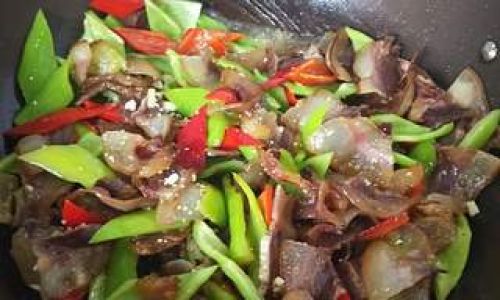
Selecting the Right Preserved Pork
When making stir-fried preserved pork, the quality of the preserved pork you use will greatly impact the final dish. Here are some tips for selecting the best preserved pork:
-
Appearance: Look for preserved pork that has a dark, glossy exterior. Avoid pieces that look overly dry or cracked, as they may be over-preserved or too old.
-
Smell: Preserved pork should have a strong, savory aroma. If it smells overly musty or has an unpleasant odor, it may be spoiled.
-
Texture: Feel the preserved pork. It should be firm but not overly hard. A slight give when pressed is a good sign.
-
Brand and Source: If possible, buy preserved pork from a reputable source or brand known for its quality. This will ensure that you’re getting a product that has been preserved properly and safely.
Preparing the Preserved Pork
Once you have your preserved pork, the next step is to prepare it for stir-frying. Here’s how to do it:
-
Soaking: Soak the preserved pork in cold water for several hours or overnight. This helps to draw out some of the excess salt and soften the meat, making it easier to slice and cook.
-
Boiling: After soaking, boil the preserved pork in fresh water for about 20-30 minutes. This further reduces the saltiness and helps to cook the meat partially, making it more tender.
-
Cooling and Slicing: Once boiled, remove the preserved pork from the water and let it cool slightly. Slice it into thin pieces, about 1/8 to 1/4 inch thick. The thinner the slices, the quicker they will cook and the more tender they will be.
Gathering Ingredients and Equipment
Now that your preserved pork is ready, it’s time to gather the remaining ingredients and equipment you’ll need for stir-frying:
Ingredients:
- Prepared preserved pork slices
- Vegetables (such as bell peppers, onions, garlic, and green onions)
- Cooking oil (vegetable oil, peanut oil, or pork fat are all good choices)
- Soy sauce
- Oyster sauce (optional, for added umami)
- Rice wine or Shaoxing wine (optional, for flavor)
- Sugar (optional, to balance the saltiness)
- White pepper (optional, for a bit of heat)
- Water or stock (if needed to create a sauce)
Equipment:
- Wok or large frying pan
- Wooden spoon or spatula
- Cutting board and sharp knife
- Measuring spoons and cups
- Bowl for mixing sauce (if needed)
Stir-Frying the Preserved Pork
With all your ingredients and equipment ready, it’s time to start stir-frying. Here’s a step-by-step guide:
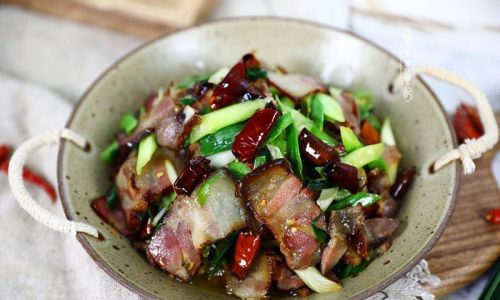
-
Heating the Wok: Place your wok or large frying pan over medium-high heat. Add a generous amount of cooking oil and let it heat up until it’s shimmering but not smoking.
-
Frying the Preserved Pork: Add the sliced preserved pork to the wok in a single layer, avoiding overcrowding. Fry for about 2-3 minutes on each side, or until the slices are golden brown and slightly crispy. This step helps to render out some of the fat and create a delicious caramelized crust.
-
Removing the Pork: Once the preserved pork is browned, remove it from the wok and set it aside on a plate. This will prevent it from overcooking while you prepare the vegetables.
-
Cooking the Vegetables: In the same wok, add a bit more oil if needed. Add chopped garlic and onions, and sauté until fragrant (about 30 seconds to 1 minute). Then, add your chosen vegetables (such as bell peppers or other sturdy veggies) and stir-fry for about 3-5 minutes, or until they are tender-crisp.
-
Returning the Pork: Add the browned preserved pork back into the wok with the vegetables. Stir to combine, ensuring that everything is evenly heated.
-
Seasoning: Add soy sauce to taste, along with any optional ingredients like oyster sauce, rice wine, sugar, and white pepper. Stir well to coat the meat and vegetables with the sauce. If the dish seems too dry, you can add a splash of water or stock to create a light gravy.
-
Final Cooking: Cook for an additional 2-3 minutes, stirring constantly, until the sauce has thickened slightly and everything is heated through. Taste and adjust the seasoning as needed.
-
Garnishing and Serving: Remove the stir-fried preserved pork from the heat. Garnish with chopped green onions or other fresh herbs if desired. Serve immediately with steamed rice or noodles to soak up the delicious sauce.
Tips for Perfect Stir-Fried Preserved Pork
Here are some additional tips to ensure your stir-fried preserved pork is a success:
-
Don’t Overcook: Preserved pork can become dry and tough if overcooked. Be careful to monitor the cooking time and remove the dish from the heat once the meat and vegetables are tender and the sauce has thickened.
-
Balance the Flavors: Preserved pork is naturally salty, so be cautious with the amount of soy sauce and other salty ingredients you add. A touch of sugar can help to balance out the saltiness and add a hint of sweetness.
-
Use Fresh Vegetables: Fresh, crisp vegetables are essential to this dish. They add color, texture, and a fresh, clean flavor that complements the rich taste of the preserved pork.
-
Experiment with Ingredients: While the classic combination of preserved pork, garlic, onions, and bell peppers is delicious, don’t be afraid to experiment with other ingredients. Mushrooms, bamboo shoots, or even tofu can add new layers of flavor and texture to the dish.
Conclusion
Stir-fried preserved pork is a dish that combines the best of traditional Chinese cuisine with the convenience of modern cooking. By following the steps outlined in this article, you can create a delicious, satisfying meal that is sure to impress your family and friends. Whether you’re a seasoned chef or a novice cook, the key to success is attention to detail, careful preparation, and a willingness to experiment with different ingredients and flavors. So, gather your ingredients, heat up your wok, and start stir-frying your way to a delicious meal. Enjoy!
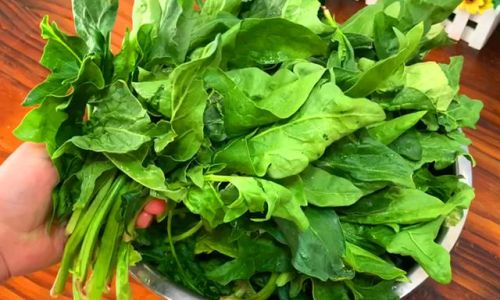
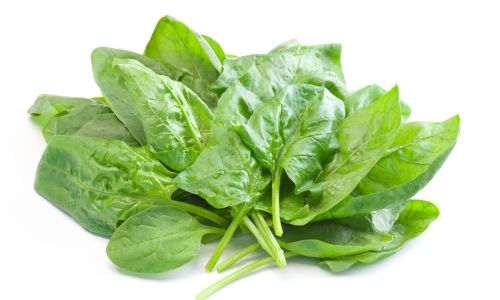
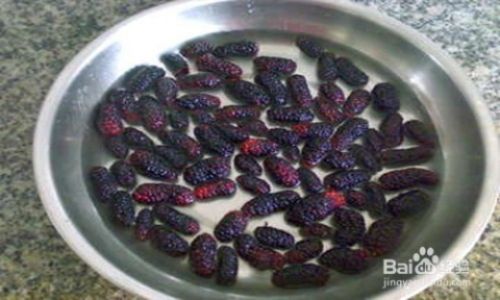


0 comments